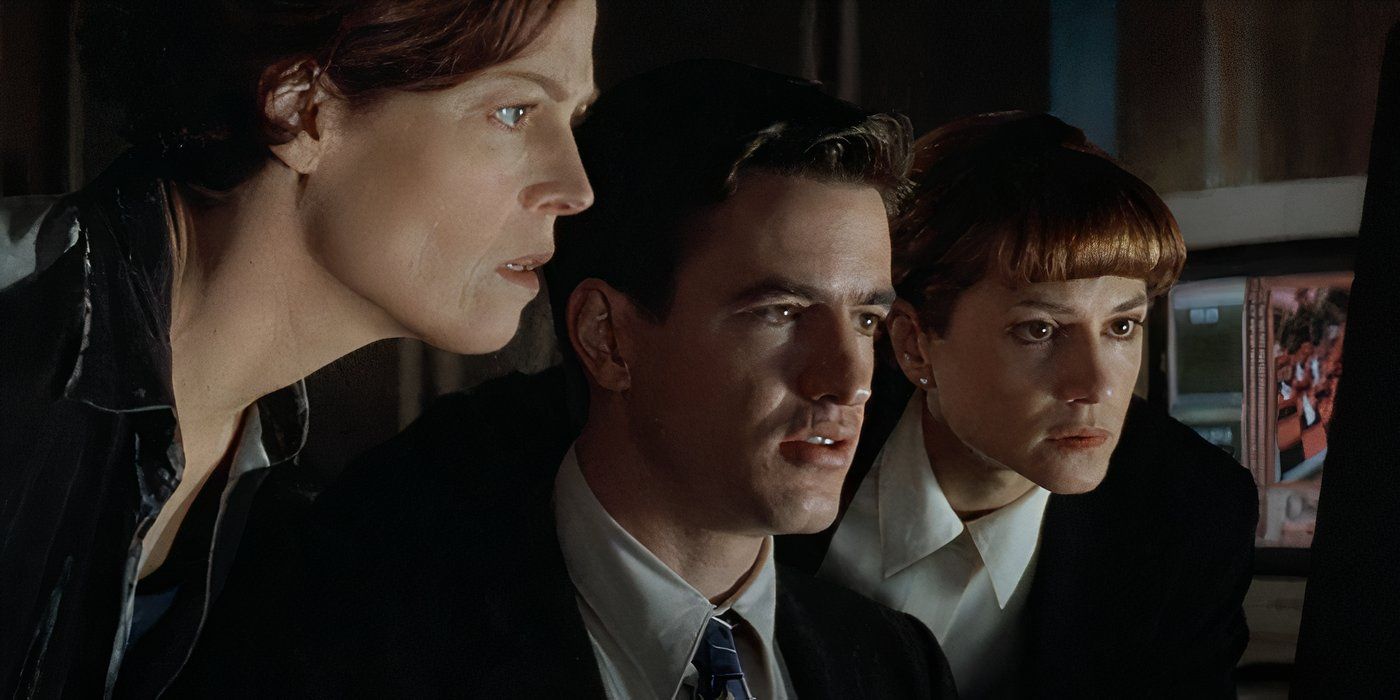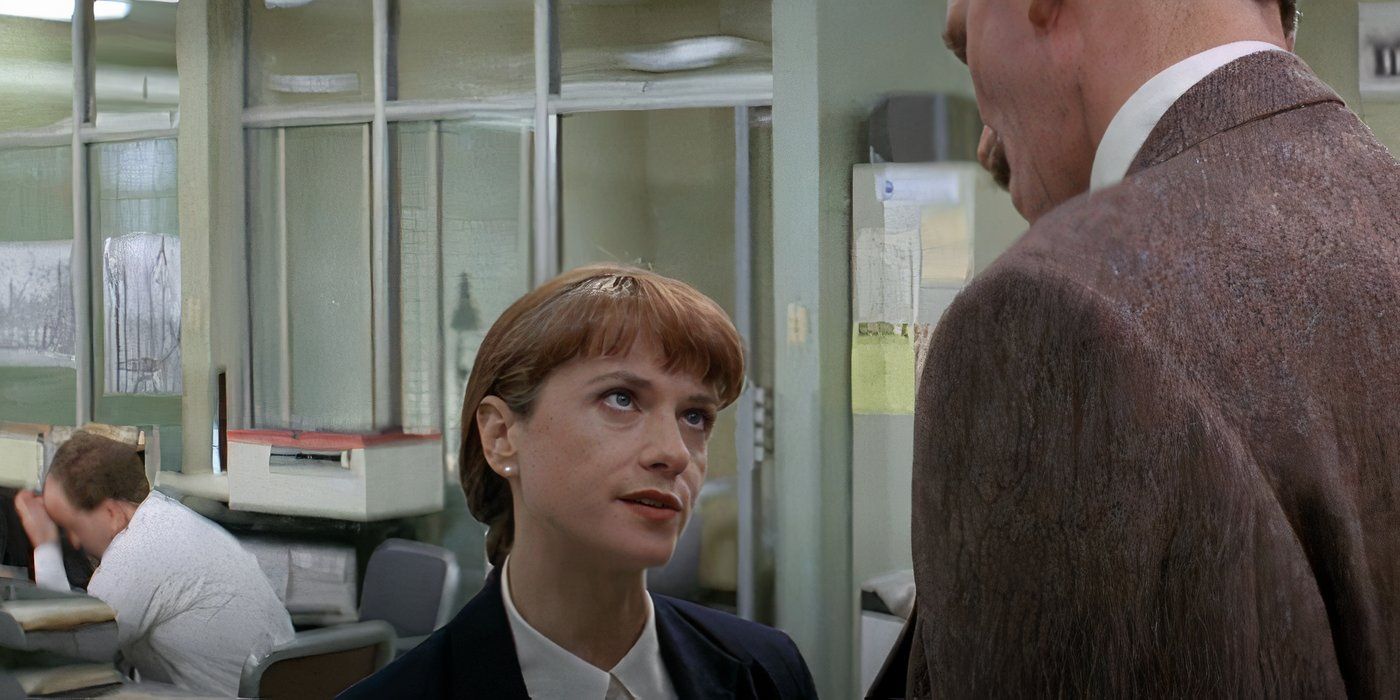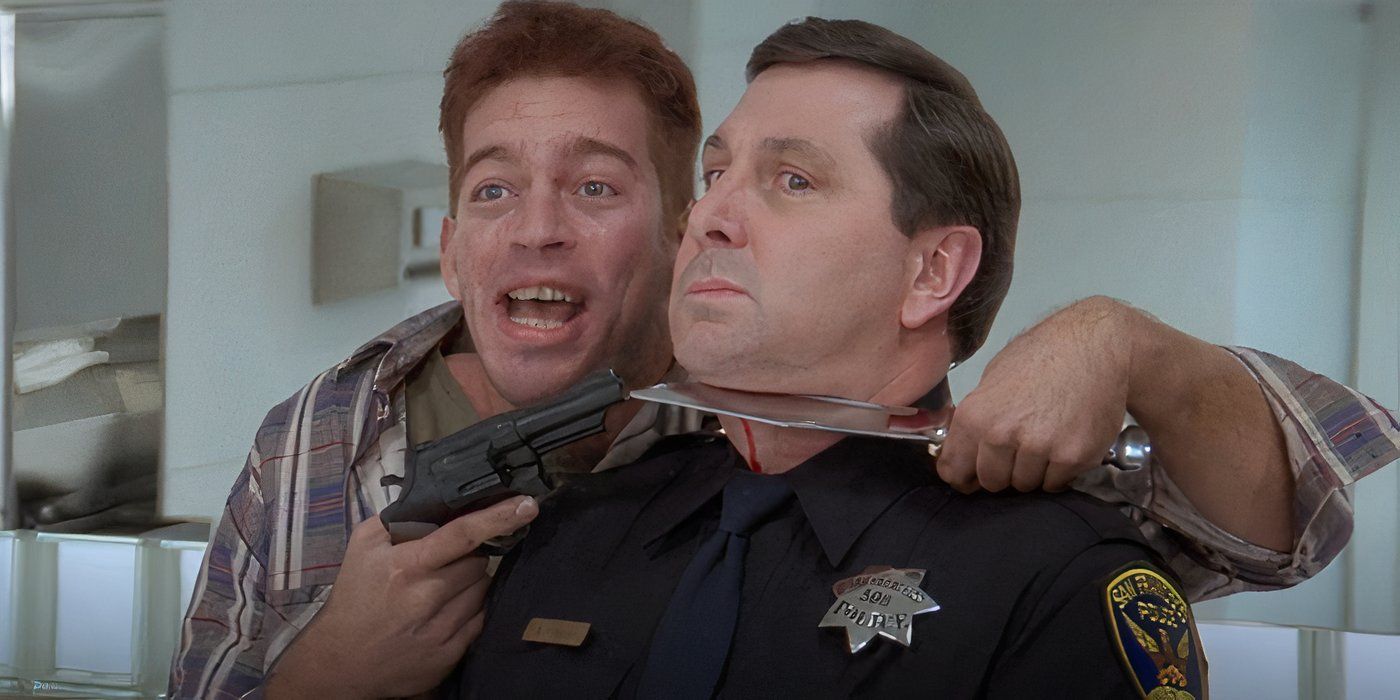The Big Picture
-
Copycat
stands out among ’90s crime thrillers for its compelling female duo, unique killer MO, and tense atmosphere. - The film expertly balances dark themes with moments of levity, creating a captivating and memorable viewing experience.
- Sigourney Weaver delivers a powerful performance as Dr. Helen Hudson, showcasing resilience and strength in the face of danger.
Silence of the Lambs (1991), Seven (1995), and Zodiac (2007) are influential crime thrillers with a tried-and-true premise of a dedicated investigator/team working tirelessly to hunt down a serial killer. Filling out the rest of what these films offer, is a macabre tone, an excellent cast, and a tantalizing mystery. But a film that should be included on this list is an underrated thriller that hasn’t gotten the same kind of attention. Copycat (1995) gets too much right for it to be forgotten. A boom in serial killer movies during the 1990s kicked off with Silence of the Lambs, and while some were influential, others have been left behind to be rediscovered.
Copycat is part of the latter, released in the same year, and only one month after Seven came out. The cast is led by Sigourney Weaver, as one half of a female duo that switches the story away from the usual male-dominated focus. The killer at large may not be a cannibal, and they don’t brand victims according to the seven deadly sins, but they have a demented MO of their own. Part brutal mystery and part character study, this 1995 thriller has a serrated edge to it as the leading women risk their lives to stop the killing spree.
What Is ‘Copycat’ About?
Dr. Helen Hudson (Sigourney Weaver) is a renowned criminal psychologist, who never leaves her San Francisco apartment due to severe agoraphobia. When a killer emerges, inspectors Reuben Goetz (Dermot Mulroney) and M. J. Monahan (Holly Hunter) approach Hudson for help. She has the expertise that inevitably pulls her in to help, but she worries about the attention it will put on her. For good reason. The killer has an obsession with her and being confined to her apartment becomes a trap. From the get-go, Copycat makes Helen and the viewer feel danger is never too far away.
In the opening, she finishes a lecture at a university, and her safety is swiftly robbed during an attack in the bathroom by escaped killer Daryll Lee Cullum (an unrecognizable Harry Connick Jr.) who has developed an obsession with the criminal psychologist. It’s a distressing image to see when Cullum strings Helen up with a wire noose. She can’t hide from him, nor can she hide within the scene. The colors on-screen reflect this. Her red outfit keeps her in full view among the bathroom’s white floors and white walls. This invasion of privacy and what is nearly a deadly encounter understandably rattles her, sending her into the agoraphobia that confines her to the apartment. Thirteen months later, a new killer not only wants to get her attention, but he knows how to infiltrate her apartment, tapping into anxieties everyone surely has about their home no longer being a safe space.

Related
Sigourney Weaver’s Lost First Movie Is Absolutely Bizarre
This 1978 flop could really use a chest-bursting scene.
Helen is alone in her apartment late one night when she’s emailed a video from the killer. He’s edited footage from his last victim which fades into the woman he will target next. Her face turns into a skull with a scream edited in. The camera slowly zooms onto the horror growing across Weaver’s face. It’s one of the creepiest moments where no harm is directly happening to her. Another late-night scene goes further with the creep factor. Helen gets into bed to find a horde of carpenter ants under the covers, put there by the killer. Her panic is understandable, and viewers might even feel a crawling sensation on their own skin. When the copycat killer is revealed (only to the viewer) with about an hour left, the film gains more tension by not hiding him.
Peter Foley (William McNamara) is recreating crimes from the Boston Strangler to Jeffrey Dahmer. He, at first, seems like a timid young man, but this masks his deadlier self. In the basement of his house, a female victim is tied down with a plastic bag over her head. The camera offers both perspectives on the horrific situation, cutting from the woman’s point of view (POV) to Peter’s when he uses a scalpel to delicately slice a breathing hole into the plastic. While the order of the killings confuses Monahan and Hudson at first, when they figure it out, it again makes things personal for Hudson. This film never shows too much of the violence, and so when it does let the camera show it, it can be startling. What sets Copycat apart from other more well-known “catch the killer” thrillers is the central pairing of Weaver and Hunter, in what is easily the most compelling dynamic in this film.
Sigourney Weaver and Holly Hunter Make a Powerful Duo in ‘Copycat’
Dr. Helen Hudson belongs to the “immobile sleuth” trope, descended from what is probably the most famous version of the trope in James Stewart’s housebound murder witness from Rear Window (1954). Weaver’s performance never has Hudson on stable ground, as she can easily slip into a vulnerable, paralyzing state of panic. If she tries to step out of her apartment door, her agoraphobia swells up within her. She can barely look down the hall, because within seconds her vision is affected. On the other hand, while those emotions pour out, Hunter portrays Monahan with a steely personality. She views Hudson’s mental health as a problem that can slow down their investigation when it needs as much of a fast pace as possible.
Monahan never lets her guard down, with curt responses to her fellow officers and Hudson. The height difference between the lead actresses – Weaver is taller than Hunter – is another way to represent how they don’t “see eye to eye.” They both have inserted a form of isolation into their lives to gain some control. For Hudson, denying herself public interactions is to keep herself safe; for Monahan, it’s to do the best work she can in her cases. A bond soon forms between them when they realize the skills they bring in solving the murders, like the best duos who are stuck together, whether in Seven or True Detective. But Copycat isn’t only focused on the murders, it takes a look into the daily activity of the police force.
‘Copycat’ Provides a Window Into the Lives of the Detectives
Monahan doesn’t work alone, she has a partner in Goetz. In the role, Dermot Mulroney is warmer and patient in dealing with Helen. He turns down Helen when she tries to flirt, and he hints that he wants a relationship with Monahan, but the film never goes in this direction, and it’s for the best. Instead, there’s a look into the San Francisco police force, where Monahan has to deal with fellow detective and ex-boyfriend, Nikko (Will Patton), who is petty toward Goetz out of jealousy. The focus on Monahan’s workplace eventually leads to a shocking death that shouldn’t be spoiled for first-time viewers.
It’s not done by the copycat killer, and this plot point emphasizes the sudden loss of life that exists in their line of work. By not restricting the plot to the main killing spree, it helps the film feel bigger. Even when the film goes into Helen’s world, she isn’t entirely secluded. She has a close friend who helps with bringing in the items she can’t get on her own, from the newspaper to groceries. This brings in some queer representation that feels somewhat unique for being a ’90s film, but it needs to be mentioned that Copycat uses a queerphobic fear similar to Silence of the Lambs.
The Complicated Queer Themes Present in ‘Copycat’
In the opening attack, Cullum hides in the women’s bathroom by sitting in one of the stalls with a pair of heels on to fool an escorting guard with Helen. The camera makes sure to see the moment the heels are removed to reveal bigger, manly feet, for the viewers to know what Helen does not. The moment doesn’t linger on the screen as long as the “Goodbye Horses” scene in Silence of the Lambs and Cullum’s sexuality is never in question. He’s attracted to Helen to a perverse amount. The queerness is given a better handle with Helen’s friend and assistant Andy (John Rothman). It’s not a mistake that he’s a gay man. This eases one worry of Helen in that she will catch the eye of another violent straight man like Cullum.
During a quiet moment between them, Andy admits to Helen he too has a crush on Goetz, and they have some banter about it. A scene like this treats Andy like he naturally belongs in this world. It’s a small effort, but decent enough. Ultimately, his character is attacked and killed by the copycat killer, who recreates a murder by Jeffrey Dahmer. As problematic as the scene could have been, there’s sadness and horror to the ambush. While there are certainly grim high stakes in the movie, the audience is also very aware that Andy deserved better.
‘Copycat’ Doesn’t Take Itself Too Seriously
Though Copycat goes to dark places, but it’s not bleak. Some humor in the script and a dramatic flair to a key role is a departure from the very serious plots in the many “catch the killer” thrillers out there. While the copycat killer, Peter Foley, is like the serious-minded killers from well-known thrillers, the imprisoned Cullum behaves like a stereotypical redneck archetype with a devilish grin of rotten teeth. He’s an over-the-top presence, taking glee at killing when he had the chance, and who went on to publish a book while behind bars, with the not-subtle title, My Life with a Knife.
Cullum is Helen’s version of Hannibal Lecter, and whenever he’s on-screen, Connick Jr. relishes how untamed Cullum is. Then there is the score by Christopher Young, which is practically a character in itself. It’s mostly tragic, expressing the toll for Hudson and Monahan in being surrounded by death. But it can be intense. When Copycat reaches the finale, Young’s music stirs up the suspense as things spiral out of control when Peter targets Hudson without any cruel games left.
Helen Hudson Is One Tough Survivor
Yanked into danger again, Weaver gives a vulnerable, hyperventilating performance that can remind viewers of the ending to 1979’s Alien. In that horror/sci-fi classic, a sweaty Ripley is the last one standing, rushing through a spaceship that is on a self-destruct countdown. Like what Ripley must do, Dr. Hudson deals with growing fear that could suffocate her if the wire noose around her neck didn’t do it first. She must stay alive when Peter forces her to reenact the opening bathroom attack. After everything she’s been through, she never gives up. Without a knife or mace, Helen uses broken glass and cleaning spray to inflict pain on Peter for a satisfying payback. When the credits roll, you may have realized you found a crime thriller that deserves to be seen as a ‘90s classic.
For viewers who want their murder mysteries brooding, with a fascinating duo to root for, Copycat will be the perfect watch. It’s a great opportunity to see Weaver and Hunter share the screen, bickering and working together, long before True Detective created its own female duo to take charge of solving a morbid crime. In the same year that saw the moody and defeated men of Seven descent into pessimism, Helen Hudson and M.J. Monahan formed the core partnership in Copycat that didn’t succumb to the darkness enacted by violent men.
Copycat is currently available to stream on Hulu in the U.S.
WATCH ON HULU







